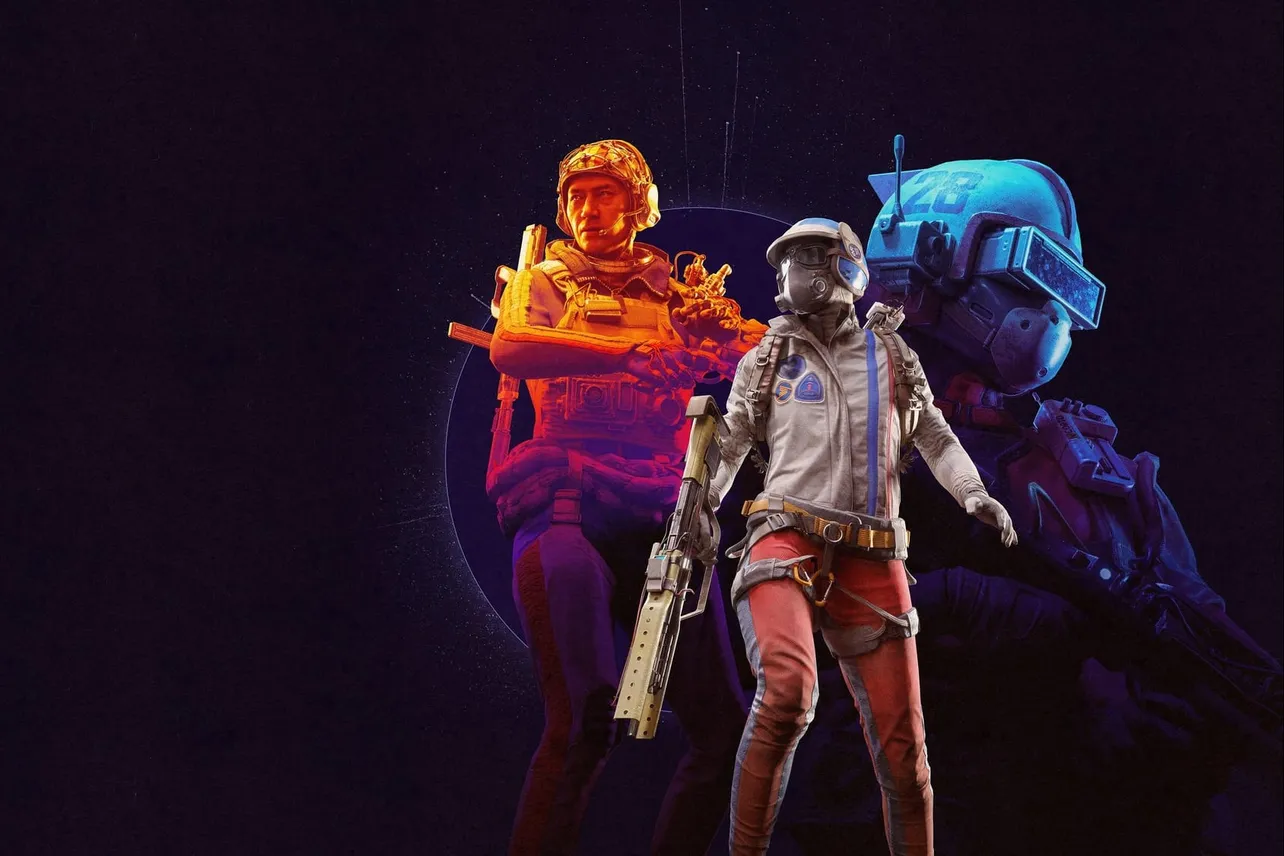Arc Raiders runs well for a modern Unreal Engine 5 game, but competitive play demands stable, low-latency frames and clean visibility. The settings below prioritize responsiveness and clarity without guesswork. Start by identifying your bottleneck, then apply the presets and fine-tune where needed.
Check your bottleneck first (CPU vs. GPU)
Wrong tweaks waste performance. Monitor CPU and GPU usage during a live raid using Task Manager (Performance tab) or an overlay. Whichever sits around 90–100% most of the time is your bottleneck:
- GPU-bound (GPU ~95%, CPU ~50%): Lower graphics load. Drop shadows/effects/post-processing, and enable DLSS/FSR on Balanced.
- CPU-bound (CPU ~100%, GPU ~40–70%): Reduce CPU load. Close background apps/overlays, keep frame rate uncapped, consider slightly raising resolution or texture quality to better balance the load.
Note: In busy multiplayer zones, the CPU can become the limiter. High-refresh goals (144Hz+) make this more noticeable.
Recommended presets (competitive vs. high fidelity)
| Setting | Competitive preset (FPS/latency) | High‑fidelity preset (visuals) |
|---|---|---|
| Display Mode | Borderless window | Fullscreen |
| Resolution | 1080p or 1440p | Native (up to 4K) |
| V‑Sync | Off | Off (use G‑Sync/FreeSync if available) |
| NVIDIA Reflex / AMD Anti‑Lag | On (+ Boost for Reflex) | On |
| DLSS/FSR mode | Balanced | Quality or DLAA (NVIDIA) |
| Frame Generation | Off | Off (avoid added latency) |
| Ray Tracing / RTX GI | Off | Static / High |
| Shadows | Low | High/Ultra |
| Foliage | Low | Medium |
| Effects | Low | High |
| Motion Blur | Off | Off |
Tip: If window mode behaves oddly on your system, try switching between fullscreen and borderless. Stick with the one that stutters least for you.
Critical toggles to keep off (visibility and latency)
- Motion Blur: Off — blurs targets during camera movement and tracking.
- Depth of Field: Off — can hide peripheral threats while aiming.
- Camera Shake: Off — reduces screen disruption during explosions and sprinting.
Upscaling, anti‑aliasing, and Frame Generation
- DLSS/FSR mode: Balanced is the best performance/clarity trade‑off for most GPUs. Avoid Performance unless you cannot reach your target FPS.
- DLSS model (NVIDIA): If you notice ghosting or light trails on the Transformer model, switch to the CNN model. Pick the one that looks cleaner on your system.
- Frame Generation: Skip it for PvP. It inflates the FPS counter but adds latency, which hurts aim consistency.
- Resolution scale: Keep the upscaled resolution at 100% and rely on DLSS/FSR rather than lowering base resolution.
Foliage quality caveat (competitive visibility)
Foliage quality affects how much ground cover is rendered and can change what players see. Reports conflict on exactly what disappears at lower settings, but the competitive meta leans toward Low because it reduces visual clutter and can expose players who assume vegetation provides cover. If you value parity and clarity in gunfights, set Foliage to Low until rendering is normalized.
Driver control panel settings (low latency defaults)
NVIDIA Control Panel
- Low Latency Mode: On or Ultra
- Power Management: Prefer maximum performance
- Texture Filtering: High performance
- Shader Cache: On
- Vertical Sync: Off
AMD Adrenalin
- Anti‑Lag: Enabled
- Power Profile: High performance
- Texture Filtering: Performance
- Shader Cache: Enabled
- Vertical Sync: Always off
Windows and in‑game housekeeping
- Close background apps and overlays (browsers, screen recorders, chat overlays, launchers) before matchmaking.
- Set Windows Power Plan to High performance to avoid CPU downclocking during heavy fights.
- Keep GPU drivers current for game‑specific fixes.
- Advanced: On the game executable, disabling “Fullscreen optimizations” (Properties → Compatibility) can reduce stutter on some DX12 systems.
Audio and HUD for awareness
- Output device: Headphones on stereo/“Headphones” mix.
- Night Mode: On. Compresses dynamic range so quieter cues (footsteps, rustling) are easier to hear.
- Proximity chat: Use push‑to‑talk to avoid broadcasting your position.
- Crosshair: Use a bright, contrasting color (cyan/green) with a black outline for snow and sky. Enable damage direction indicators.
Optional config tweak (subtle sharpening)
If you’re comfortable editing configs, add a light sharpening pass for crisper edges:
Path:
C:\Users\[username]\AppData\Local\PioneerGame\Saved\Config\WindowsClient
File:
GameUserSettings.ini
Add:
r.tonemapper.sharpen=0.5
Adjust between 0.3 and 0.7 to taste. This complements DLSS/FSR without introducing harsh halos when kept modest.
Hardware performance expectations (ballpark)
| Tier | Target FPS and resolution | Example hardware | Notes |
|---|---|---|---|
| Entry level | 80–100 FPS at 1080p | GTX 1050 Ti / 1070; Ryzen 5 3600 / i5‑9400F; 16GB RAM | Use DLSS/FSR. Keep shadows/effects low. |
| Mid‑range | 100–144 FPS at 1440p | RTX 3060 Ti / RX 6700 XT; Ryzen 5 5600X / i5‑12400F; 16GB RAM | Balanced upscaling; mostly High with a few Low settings. |
| High‑end | 144–240+ FPS at 1440p | RTX 4070 Ti / RX 7900 XT; 7800X3D / i7‑13700K; 32GB RAM | Ultra possible; keep latency toggles on. |
| Enthusiast | 100+ FPS at 4K | RTX 4090 / 5090; 9800X3D / i9‑14900K; 32GB+ RAM | 4K with high settings; avoid Frame Generation for PvP. |
Note: For upgrade paths focused on Arc Raiders, strong gaming CPUs (large cache, high clocks) can matter more than top‑end GPUs in crowded areas.
Targeted tweaks for common scenarios
- If you can’t hit 144 FPS on a 144Hz monitor: Drop Shadows/Effects/Post‑processing to Low, keep DLSS/FSR on Balanced, and confirm V‑Sync is off with Reflex/Anti‑Lag enabled.
- If GPU sits at 99% and stutters: Nudge DLSS/FSR up to Balanced or Quality, and reduce Reflections/Shadows before touching textures.
- If CPU is pegged and GPU coasts: Close overlays, uncap your frame rate, and consider raising resolution one step to re‑balance load.
The fastest win for most builds is simple: V‑Sync off, Reflex/Anti‑Lag on, DLSS/FSR on Balanced, ray tracing off, foliage low, and a firm no to motion blur and Frame Generation. Revisit foliage and view distance after patches, and always recheck your bottleneck after major updates.

